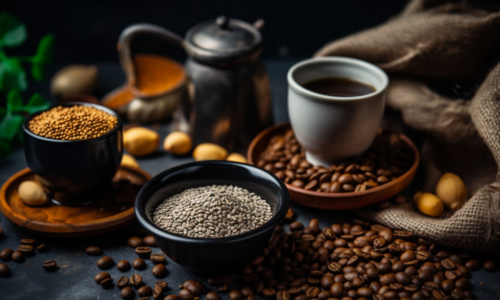A great day often starts with a perfect cup of espresso. But what makes an espresso truly exceptional? The secret lies in choosing the right beans. In this article, we will explore the various aspects of bean selection that will help you craft the perfect espresso.
Understanding Espresso Beans
Espresso beans are simply coffee beans that have been roasted, ground, and brewed specifically for espresso. They are not a specific type or species of bean. Instead, the perfect espresso bean is determined by factors such as origin, roast level, and freshness.
Arabica vs. Robusta: The Great Bean Debate
There are two main species of coffee beans: Arabica and Robusta. Arabica beans are known for their smooth, delicate flavors and lower acidity, while Robusta beans are stronger, more bitter, and higher in caffeine.
- Arabica beans are generally preferred for espresso due to their complex flavor profile and balanced acidity.
- Robusta beans can be used in espresso blends to provide a fuller body and crema.
Single-Origin vs. Blend: Which is Better?
Single-origin beans come from one specific region, whereas blends are made by combining beans from different regions.
- Single-origin beans offer unique flavors that showcase the characteristics of a specific region.
- Blends provide a more balanced and consistent flavor profile, often combining the best attributes of multiple bean origins.
Roast Level: Finding the Sweet Spot
The roast level significantly impacts the flavor of your espresso. Beans can be roasted from light to dark, with varying levels of oiliness and flavor development.
- Light roasts preserve the bean’s natural flavors but may be too acidic for espresso.
- Medium roasts strike a balance between acidity and sweetness, making them ideal for espresso.
- Dark roasts have a bolder, more bitter flavor and are often used in traditional Italian espresso.
Freshness Matters: Bean Storage and Usage
To ensure optimal flavor, store your beans in an airtight container, away from heat, light, and moisture. Use them within 4 weeks of roasting for the best results.
Grind Size: The Key to Extraction
The grind size directly affects the extraction process during brewing. For espresso, a fine grind is crucial to achieve the correct extraction pressure and flavor balance.
Experimentation: The Path to Perfection
Finding the perfect espresso bean is a personal journey. Experiment with different beans, blends, and roasts to discover your own preferences.
Ethical Considerations: Fair Trade and Sustainability
Choosing beans from ethical and sustainable sources ensures that coffee farmers are fairly compensated and that environmental practices are upheld.
Top Bean Recommendations for Espresso
Here are some popular choices for crafting the perfect espresso:
- Ethiopian Yirgacheffe
- Colombian Supremo
- Brazilian Santos
- Guatemalan Antigua
- Sumatra Mandheling
Crafting the perfect espresso starts with selecting the right beans. By understanding the differences between Arabica and Robusta beans, single-origin and blend options, roast levels, and considering freshness and ethical sourcing, you can find the beans that best suit your taste preferences. Remember that experimentation is key to discovering your ideal espresso, so don’t be afraid to try new beans and roasts!
FAQs
Q1: Can I use regular coffee beans for espresso?
A1: Yes, you can use regular coffee beans for espresso. The term “espresso bean” refers to how the coffee is roasted, ground, and brewed, rather than a specific type of bean.
Q2: How do I know which roast level is best for my espresso?
A2: Roast level is subjective, and the best roast for your espresso depends on your personal taste preferences. Medium roasts are generally recommended for espresso, but you may prefer a lighter or darker roast.
Q3: Can I mix Arabica and Robusta beans for my espresso?
A3: Yes, mixing Arabica and Robusta beans can create a well-rounded espresso with a balance of flavors, body, and crema. Experiment with different ratios to find your ideal blend.
Q4: How long do espresso beans stay fresh?
A4: Espresso beans are best used within 4 weeks of roasting. Store them in an airtight container, away from heat, light, and moisture, to maintain freshness.
Q5: How fine should I grind my beans for espresso?
A5: Espresso requires a fine grind to achieve the correct extraction pressure and flavor balance. Adjust your grinder to achieve a consistency similar to table salt.





I always struggled with finding the right espresso bean until I came across this blog post. The tips on selecting beans based on origin and roast level were really helpful. Thanks for sharing!
Thanks for the tips on bean selection! I always struggled with finding the right beans for my espresso, but now I feel confident in selecting the perfect ones. Can’t wait to try them out!